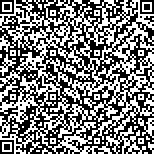| Author Name | Affiliation | | Liu Yan | Institute of Ultra-precision Optoelectronic Instrument Engineering, Harbin Institute of Technology, Harbin 150001,China | | Tan Jiu Bing | Institute of Ultra-precision Optoelectronic Instrument Engineering, Harbin Institute of Technology, Harbin 150001,China | | Tan ZhiBo | Institute of Ultra-precision Optoelectronic Instrument Engineering, Harbin Institute of Technology, Harbin 150001,China | | Wang Lie | Institute of Ultra-precision Optoelectronic Instrument Engineering, Harbin Institute of Technology, Harbin 150001,China |
|
| Abstract: |
| In order to improve the effectiveness of traditional time domain identification methods in identifying damping ratios, a new damping ratio identification method based on pattern search is proposed by fluctuating the reliable natural frequency obtained through traditional time domain identification methods by about 10% to build the boundary conditions, using all the initial identification results to establish the free decay response of the system, and using the pattern search method to correct the initial identification results with the residual sum of squares between the free decay response and the actually measured free-decay signal as the objective function. The proposed method deals with the actually measured free-decay signal with curve fitting and avoids enlarging the identified error caused by intermediate conversion, so it can effectively improve the identified accuracy of damping ratios. Simulations for a room-sized vibration isolation foundation show that the relative errors of analyzed three damping ratios are down to 1.05%, 1.51% and 3.7% by the proposed method from 8.42%, 5.85% and 8.5% by STD method when the noise level is 10%. |
| Key words: modal parameter identification damping ratio pattern search |
| DOI:10.11916/j.issn.1005-9113.2010.01.027 |
| Clc Number:O328 |
| Fund: |






